Search results for 'craft'
-
Cutipol MIO – Gold Leaf “Chirashi” Pattern (Set of 4)【Free Shipping】
A Harmonious Blend of Elegance and Craftsmanship Cutipol’s cutlery, born from a pursuit of graceful curves, meets the refined brilliance of Hakuichi’s gold leaf. The shimmering gold is applied using the traditional chirashi (scattered foil) technique, enhancing the form with subtle elegance. Each piece is unique—its expression shaped by the delicate and unrepeatable nature of gold leaf. Suitable for both Western and Japanese table settings, this spoon and fork pair makes an ideal gift for weddings or a refined touch for high-end hospitality. Learn More$309.40 -
Cutipol MIO – Gold Thread Pattern (Set of 4)【Free Shipping】
A Meeting of Two Master Crafts: Cutipol's Elegant Curves and Hakuichi's Gold Leaf Cutipol cutlery, renowned for its gracefully curved forms, meets the refined brilliance of Hakuichi’s gold leaf craftsmanship. Traditional gold thread is reimagined in gold leaf, delicately applied to enhance the cutlery’s silhouette and create a refined shimmer. Each piece is one of a kind—crafted by hand, where skilled technique and the beauty of chance combine to form dynamic, expressive patterns. Perfect for both Western and Japanese table settings, this spoon and fork set makes a sophisticated gift for weddings or a refined touch in luxury dining spaces. Learn More$309.40 -
Oborozuki Lacquer Plate 8 Sun (Approx. 24.2 cm)【Free Shipping】
A Natural Wood Plate Adorned with a Gold Oborozuki Moon A delicate oborozuki (hazy moon) motif in genuine gold leaf glows gently against the natural grain of the wood. This handcrafted plate adds an elegant touch to both Japanese and Western dining scenes. << A New Expression of Functional Beauty >> Enjoying the harmony of nature and tradition in daily life More than just a beautiful object, this plate is designed for everyday use in modern living spaces. Its form combines warmth with sharp, minimalist elegance. By placing a gold leaf oborozuki on a base that highlights the natural wood grain, the grain itself becomes a tranquil landscape—resulting in refined, artful tableware. This piece is born of exceptional craftsmanship. A master woodturner carefully shaves the wood to a delicate thinness, enhancing its natural beauty through layers of fuki-urushi (wiped lacquer). The moon is rendered by a skilled artisan using only genuine gold leaf to evoke a serene and floating celestial scene. Learn More$209.30 -
Oborozuki Lacquer Plate 6 Sun (Approx. 18cm)【Free Shipping】
A Natural Wood Plate Adorned with a Gold Oborozuki Moon A delicate oborozuki (hazy moon) motif in genuine gold leaf glows gently against the natural grain of the wood. This handcrafted plate adds an elegant touch to both Japanese and Western dining scenes. << A New Expression of Functional Beauty >> Enjoying the harmony of nature and tradition in daily life More than just a beautiful object, this plate is designed for everyday use in modern living spaces. Its form combines warmth with sharp, minimalist elegance. By placing a gold leaf oborozuki on a base that highlights the natural wood grain, the grain itself becomes a tranquil landscape—resulting in refined, artful tableware. This piece is born of exceptional craftsmanship. A master woodturner carefully shaves the wood to a delicate thinness, enhancing its natural beauty through layers of fuki-urushi (wiped lacquer). The moon is rendered by a skilled artisan using only genuine gold leaf to evoke a serene and floating celestial scene. Learn More$145.60 -
Fortune Chopstick Rests – Set of 5 Mizuhiki【Free Shipping】
A Set of Five Charming Chopstick Rests Inspired by Traditional Mizuhiki Knots This stylish and adorable set captures the spirit of celebration with beautifully crafted mizuhiki—traditional Japanese decorative knots—each designed in the elegant musubi-kiri (tight knot) style, symbolizing finality and lasting bonds. It's a perfect gift to mark joyous occasions or to express heartfelt congratulations and well-wishes. The name "Kotohogi" refers to the act of celebrating happy events and conveying blessings through words—making this set a meaningful present for weddings, anniversaries, housewarmings, or other special moments. Each piece showcases the fine wrinkles and texture of Kanazawa gold leaf, allowing you to fully appreciate its beauty. Layered with translucent ink patterns on top of the gold, the design creates a refined harmony between tradition and modern aesthetics. When arranged side by side, the five chopstick rests form a continuous mizuhiki design—an element of surprise and delight in both form and symbolism. – The Five Mizuhiki Knot Designs and Their Meanings – ◇ Kano Musubi – Wish-fulfilling Knot From the front, it resembles the kanji for "mouth" , and from the back, a cross , symbolizing the phrase “wishes come true.” ◇ Awaji Musubi (Heart-shaped) – Everlasting Bond Known for being impossible to untie once tied, this heart-shaped version of the Awaji knot represents a wish for close, enduring relationships. ◇ Ume Musubi – Plum Blossom Knot The plum tree is a symbol of health and protection from illness. As it blooms first in early spring, it's associated with a "good start" and positive beginnings. ◇ Crane Knot – Symbol of Longevity The crane, said to live a thousand years, is a traditional symbol of long life. Its loud call is believed to reach the heavens—making it a powerful bringer of good fortune. ◇ Turtle Knot – Symbol of Good Fortune and Success The turtle brings good relationships and is believed to bring career success, as it is thought to foresee the changing tides of the vast ocean. Learn More -
Fortune Chopstick Rests – Set of 5 Lucky charm【Free Shipping】
Perfect for Special Occasions or as a Gift This is a set of five lucky charm chopstick rests, each adorned with gold leaf and featuring auspicious motifs. A collaboration between Kutani ware, a traditional craft from Ishikawa Prefecture, and genuine gold leaf. This is an exclusive, original set from Hakuichi, combining tradition with good fortune. These versatile pieces can also be used as brush rests or paperweights. ◇ Daruma ◇ A symbol of family safety, good health, and victory. Daruma from Kinjiro is especially believed to bring financial fortune. ◇ Folding Fan ◇ The fan’s spreading shape symbolizes expanding prospects and a bright future. ◇ Gourd (Hyotan) ◇ Said to invite happiness and success, while also serving as a charm for protection and good health. ◇ Waves and Plovers (Nami Chidori) ◇ Plovers (chidori) are considered symbols of victory and goal achievement, as “chidori” can be interpreted as “taking a thousand.” ◇ Sea Bream (Tai) ◇ Associated with the word “medetai” (auspicious/celebratory), the sea bream symbolizes good fortune and harmony with others. Learn More -
Kanazawa Mizuhiki Panel – Crane and Tortoise [Pink]【Free Shipping】
This art panel depicts cranes and turtles—symbols of longevity—rising gracefully upward alongside gold leaf.
This art panel blends traditional techniques such as Kanazawa gold leaf, Kanazawa Mizuhiki, and hyōsō (mounting), with a design suited to today’s lifestyle. Its simple and lightweight construction makes it easy to display casually in spaces like the living room. The "Kanazawa Mizuhiki – Crane and Turtle" series expresses the uplifting image of cranes and turtles—symbols of longevity—rising gracefully with shimmering gold leaf. Enjoy this piece in your home as a symbol of good fortune and a celebration of tradition in everyday life.
Learn More$245.70 -
Kanazawa Mizuhiki Panel – Crane and Tortoise [Blue]【Free Shipping】
This art panel depicts cranes and turtles—symbols of longevity—rising gracefully upward alongside gold leaf.
Crafted using the traditional Kanazawa Mizuhiki technique, it features auspicious motifs of cranes and turtles. The elegant combination of deep blue and gold leaf blends beautifully with modern interior design. By harmonizing traditional techniques such as Kanazawa gold leaf, Kanazawa Mizuhiki, and hyōsō (mounting art), the piece is designed in a style that allows it to be easily displayed in everyday spaces like the living room.
Learn More$245.70 -
Kanazawa Mizuhiki Panel – Fūryū [White]【Free Shipping】
This art panel combines traditional Japanese techniques such as Kanazawa gold leaf, Kanazawa mizuhiki, and hyōsō (mounting methods used in hanging scrolls), reimagined to suit contemporary living spaces. Designed to suit modern living spaces, this art panel features a thoughtfully considered size and lightweight construction—making it easy for even a single person to hang, such as a woman decorating her own space. It combines traditional Japanese techniques such as Kanazawa gold leaf, Kanazawa Mizuhiki, and hyōsō (traditional mounting), creating a refined blend of craftsmanship and contemporary style. The piece titled “Kanazawa Mizuhiki Fūryū” incorporates a tamakmusubi (decorative knot) representing nanten berries—often used in simple Mizuhiki designs—along with motifs of pine, symbolizing good fortune and longevity.
Learn More$245.70 -
Kanazawa Mizuhiki Panel – Fūryū [Crimson]【Free Shipping】
This art panel combines traditional Japanese techniques such as Kanazawa gold leaf, Kanazawa mizuhiki, and hyōsō (mounting methods used in hanging scrolls), reimagined to suit contemporary living spaces. The vivid vermilion background beautifully enhances the brilliance of the gold leaf and highlights the graceful flow of white mizuhiki cords. Accents of tightly knotted cords represent nanten berries (a symbol of good fortune), along with pine motifs, both commonly featured in elegant mizuhiki arrangements.
Learn More$245.70

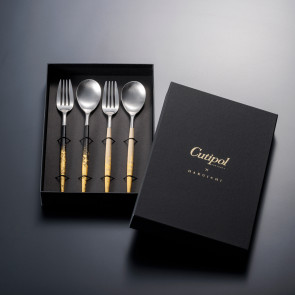
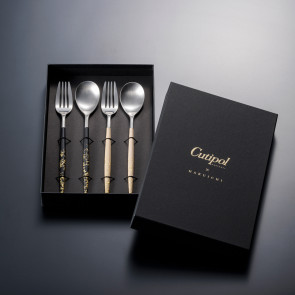
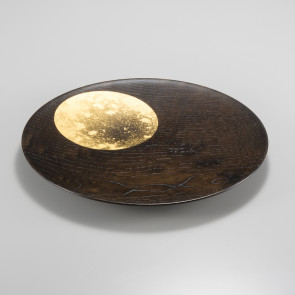
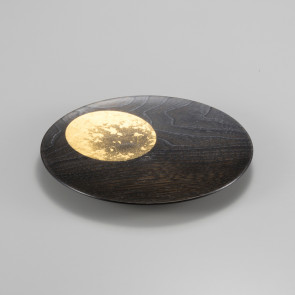
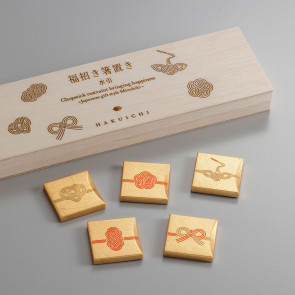
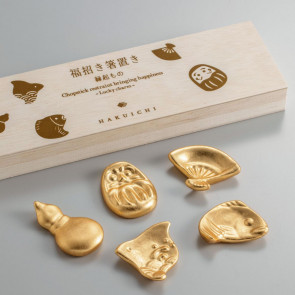
![Kanazawa Mizuhiki Panel – Crane and Tortoise [Pink]【Free Shipping】](https://hakuichi.com/media/catalog/product/cache/1/small_image/295x/040ec09b1e35df139433887a97daa66f/_/1/_1_21_2.jpg)
![Kanazawa Mizuhiki Panel – Crane and Tortoise [Blue]【Free Shipping】](https://hakuichi.com/media/catalog/product/cache/1/small_image/295x/040ec09b1e35df139433887a97daa66f/_/b/_buru-_1.jpg)
![Kanazawa Mizuhiki Panel – Fūryū [White]【Free Shipping】](https://hakuichi.com/media/catalog/product/cache/1/small_image/295x/040ec09b1e35df139433887a97daa66f/_/1/_1_21.jpg)
![Kanazawa Mizuhiki Panel – Fūryū [Crimson]【Free Shipping】](https://hakuichi.com/media/catalog/product/cache/1/small_image/295x/040ec09b1e35df139433887a97daa66f/_/1/_1_20.jpg)

